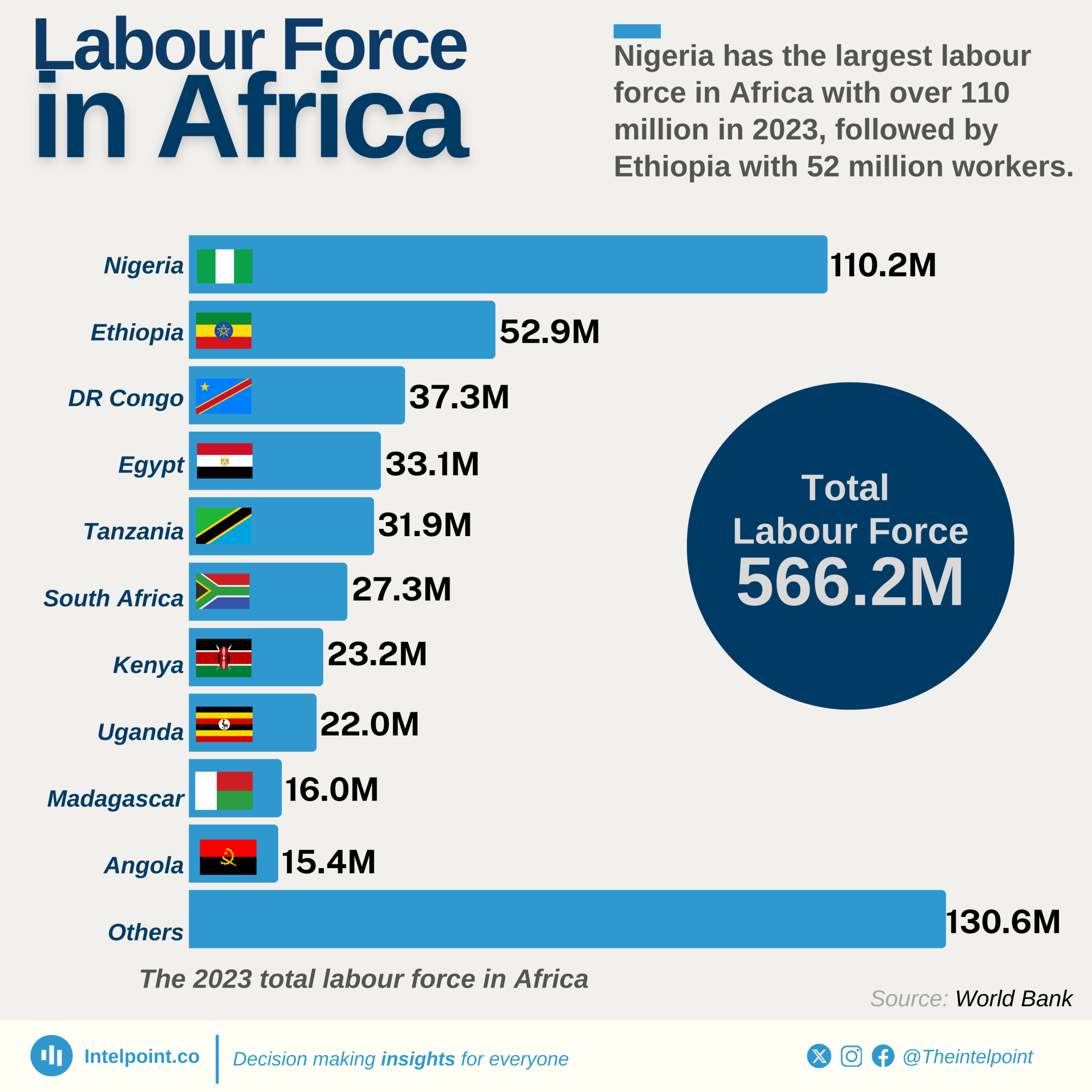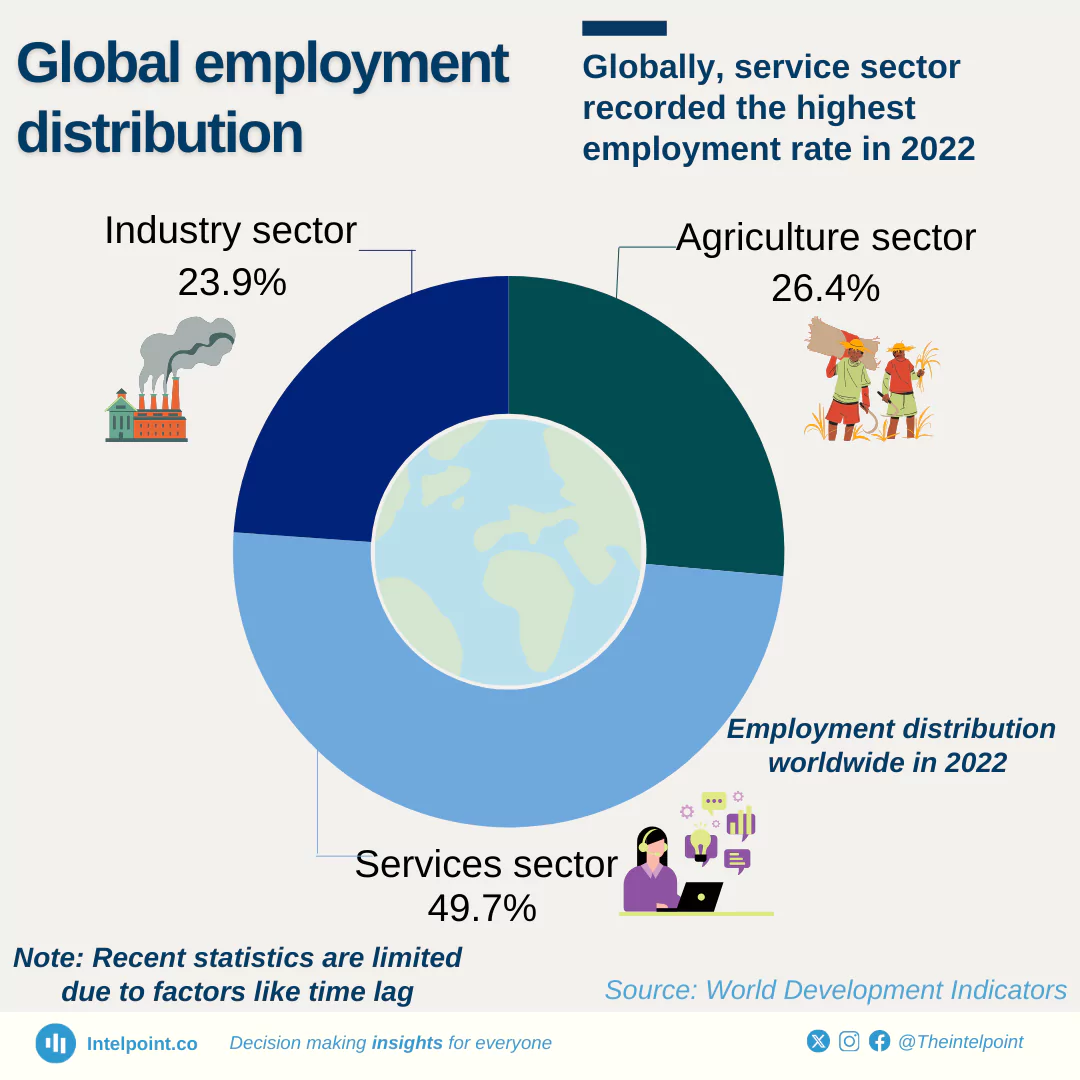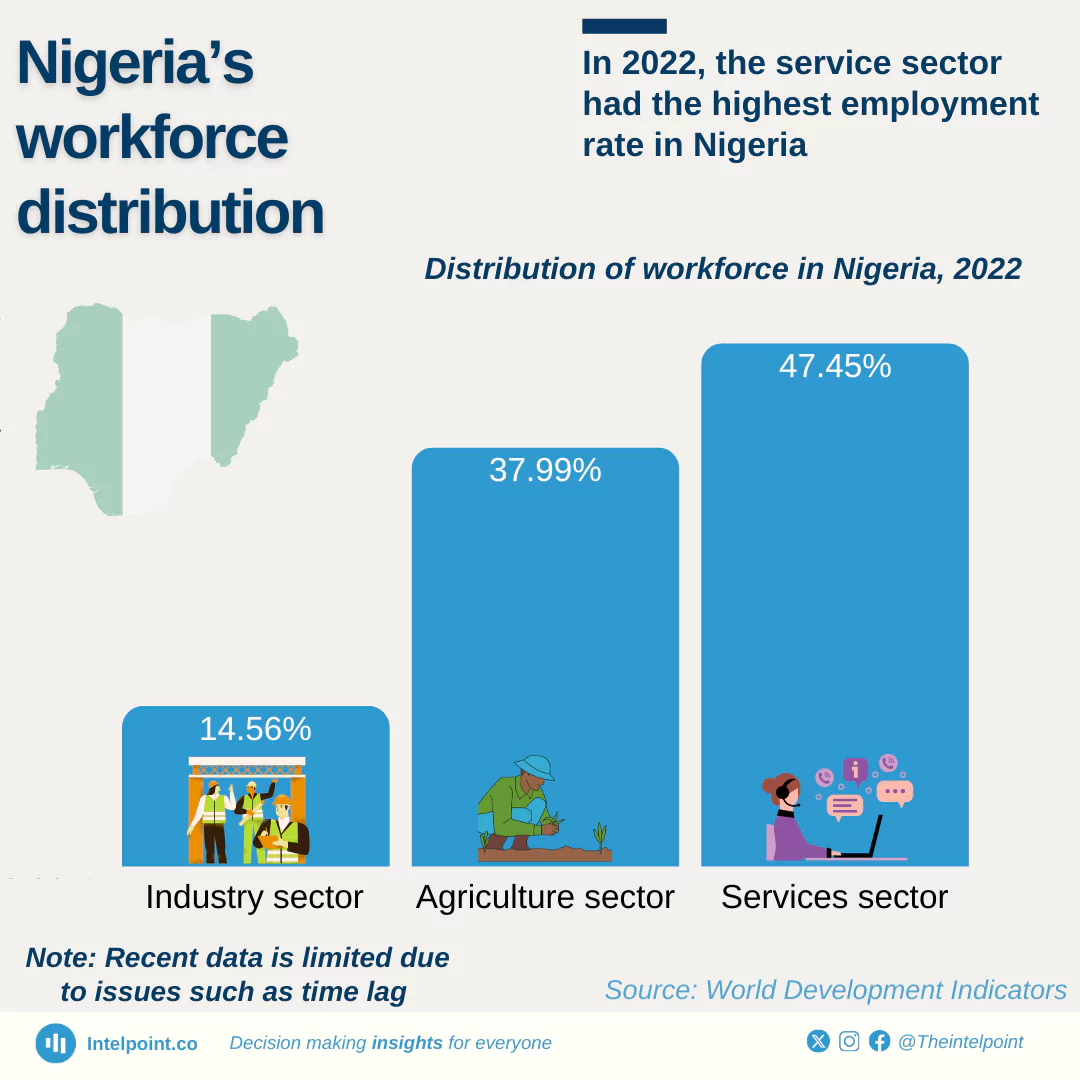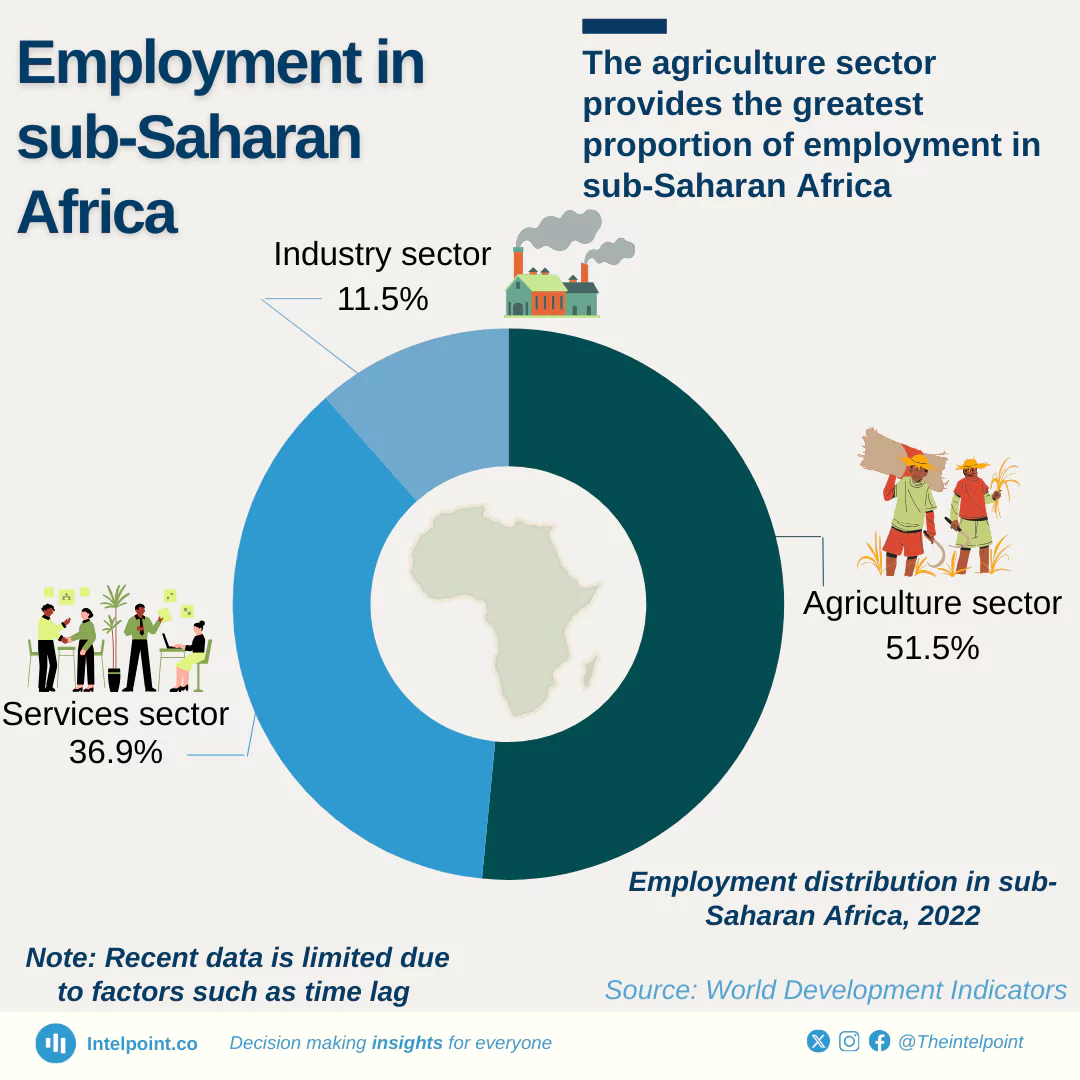The global workforce stands at 3.7 billion people, but it’s far from evenly spread. China and India alone account for 21% of all workers worldwide, a reflection of Asia’s massive population and industrial backbone. The United States comes a distant third, proving that economic output doesn’t always match workforce size.
Nigeria, with 113 million workers, ranks 5th globally and stands as Africa’s largest labour force, underscoring the continent’s young and growing population. Meanwhile, countries like Japan and Russia round out the list, their smaller workforces reflecting aging populations and slower demographic growth.





